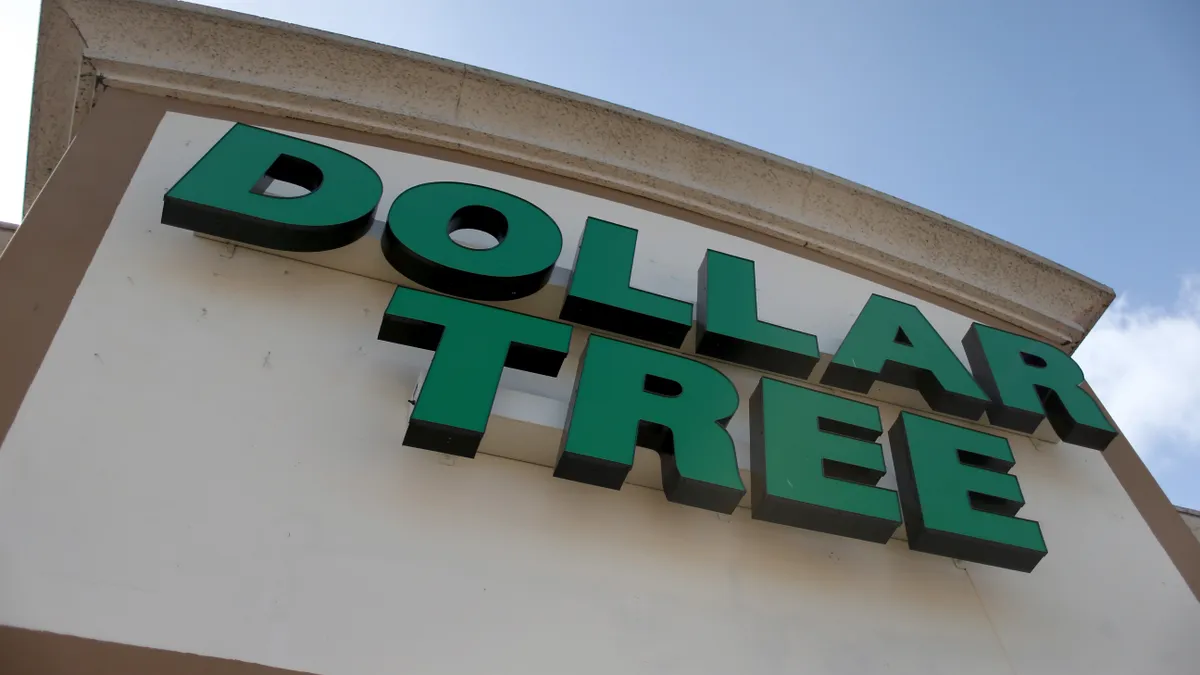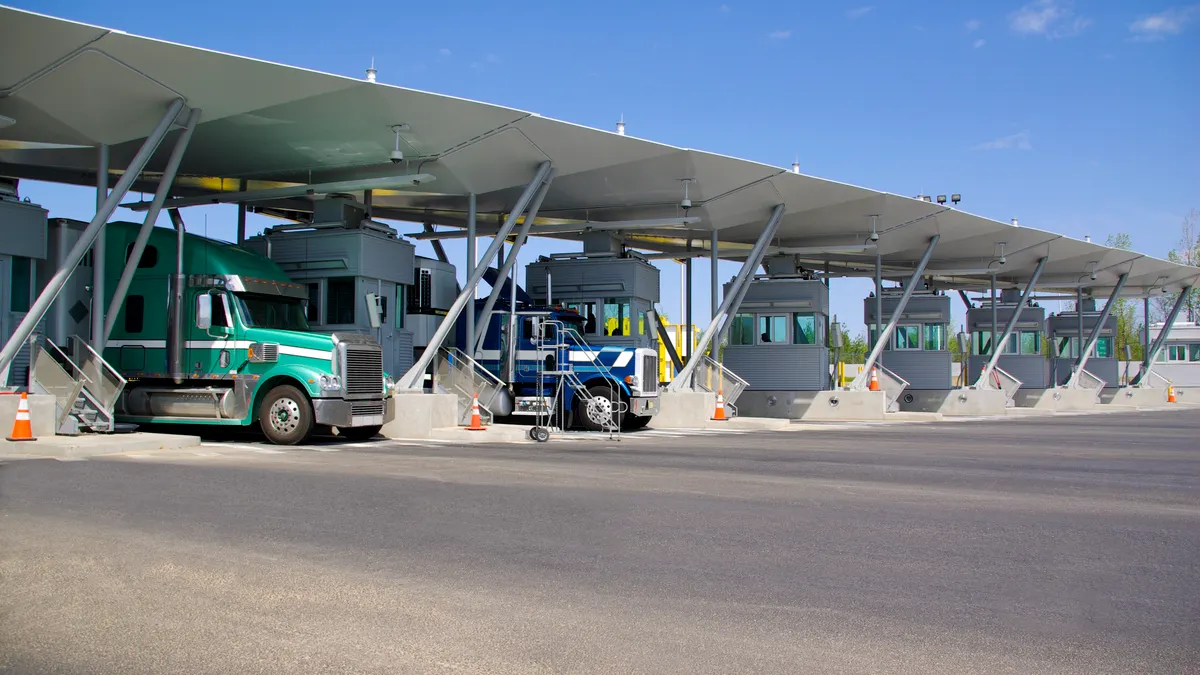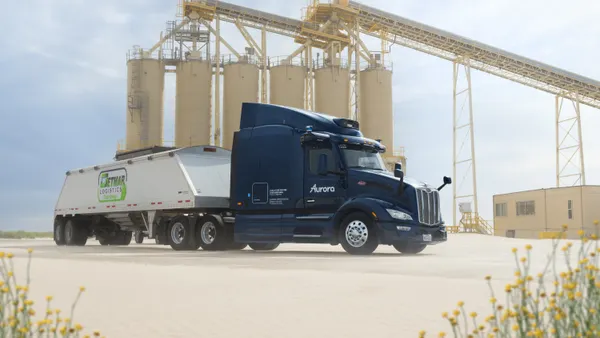Dive Brief:
- For Dollar Tree, costs associated with inbound and outbound domestic freight are on the rise, CFO Kevin Wampler said during a recent earnings call. A lack of truck drivers, coupled with elevated trucking demand, means shippers "maybe be paying surge rates to get goods moved," he said.
- Freight-market conditions, in general, have "continued to deteriorate" over the last few months, Wampler said. The biggest headwinds stem from higher rates on import freight, he added.
- "We are now expecting costs to be significantly higher than originally projected, led by import freight due to the continued disruption in the global supply chain from equipment shortages and capacity issues," Wampler said. "If these disruptions affect the timing of inventory receipts, it could affect sales and mix." Costs will have the largest impact in Q2 and Q3, he added.
Dive Insight:
Dollar Tree's logistics capability uses third parties, with a mix of spot, annual contracts and multiyear contracts. Carriers of ocean and road freight have contended with capacity constraints so far this year.
One analyst on the call noted the company's transportation cost assumption went from $80 million last quarter to $240 million now, and those increases have impacted profitability. Wampler said the discrepancy, in large part, stems from the fact that the company did not expect it would need to use the spot market as much as it has, and will continue to going forward.
Dollar Tree's contracts go through April 2022, Wampler said. "That’s a long ways away, and a lot of things will change between now and then," he said.
Wampler and CEO Mike Witynski reiterated throughout the call that they expect these freight conditions to be relatively short term.
"That freight is temporary, it’s not permanent, and it’s due to the tailwinds of COVID. The world and container ocean freight is just upside down right now, but it will not last forever," Witynski said.
High spot rates and load-to-truck ratios have been the story for months. The industry has cited the driver shortage as a contributing factor to the lack of available trucks, combined with increasing volume from shippers. The backup at West Coast ports turned the heat up on spot rates.
Load-to-truck ratios
Wampler also noted fuel prices have exceeded expectations this year. "Obviously we saw that spike during the quarter, with a couple events that took place out there," he said of fuel prices.
Wampler did not specify which events he was referencing. But the Colonial Pipeline shutdown, caused by a ransomware attack, spiked fuel prices. UPS increased its fuel surcharges, which are tied to average highway diesel fuel prices.
In ocean shipping, there aren't enough containers on the market to meet demand, even as manufacturers ramp up production, Triton Head of Global Marketing and Operations John O'Callaghan said on the company's earnings call last month.
Spot rates from China/East Asia to US
Wampler said he expects it will take the global supply chain all of 2021 to "work through this." Other executives have concurred.
Zim CFO Xavier Destriau said during a recent earnings call the company expects freight rates to remain elevated throughout the year. Zim's long-term contracts kicked in May 1st, and rates are more than 50% higher YoY, driven by high demand and equipment shortages.
"We’ve seen a dislocation between what we’d call the contracted rates and the spot market," Wampler said, adding that Dollar Tree finalized its import contracts in late April. We're "really just seeing higher rates to move product due to the capacity constraints," he said.










